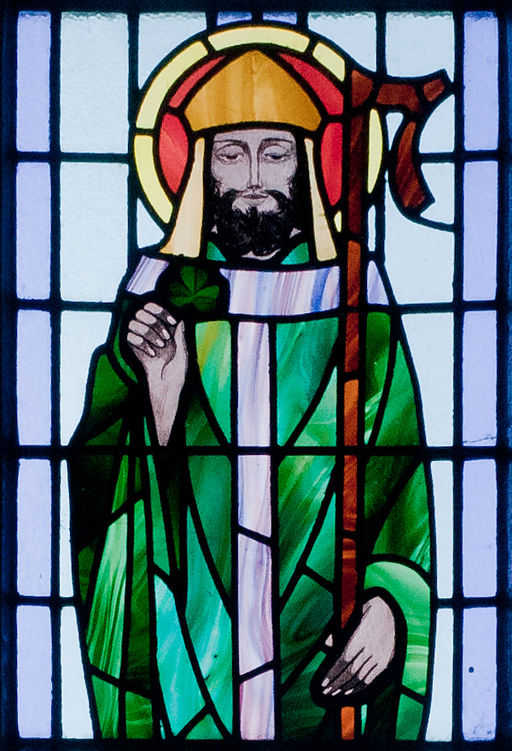 Happy Saint Patrick’s Day! While not Irish myself, I do have quite a few Irish relatives by marriage on my Italian mother’s side. (“They meet each other in church!” as my Irish uncle-by-marriage once cheerfully explained to me.) To honor the day, I thought I’d share five fascinating facts about Ireland’s patron saint, Patrick (approximately CE 389 to 461). March 17th is believed to be his death date.
Happy Saint Patrick’s Day! While not Irish myself, I do have quite a few Irish relatives by marriage on my Italian mother’s side. (“They meet each other in church!” as my Irish uncle-by-marriage once cheerfully explained to me.) To honor the day, I thought I’d share five fascinating facts about Ireland’s patron saint, Patrick (approximately CE 389 to 461). March 17th is believed to be his death date.
We’re not sure who the original inhabitants of Ireland were, although some historians believe the Greeks or Scythians arrived in Ireland as early as 1000 BCE. Around the fifth century BCE, the Celts moved in and there was a lot of clannish fighting; warriors were buried standing up, to be ready for battle. Their religion was polytheistic, overseen by priest-like druids, and everyone believed in fairies and witches and elves.
So on to the fascinating facts about Saint Patrick:
1. Saint Patrick wasn’t even Irish. He came from somewhere in western England, the son of a Roman citizen. Patrick had no interest in Christianity until he had a religious conversion as a teenager.
2. Patrick did not come to Ireland until he was sixteen, when he was captured by pirates. Irish brigands enslaved him and brought him to Ireland, where for six years he herded pigs. He escaped, caught a ship to Gaul (or maybe Italy), and after a time managed to rejoin his family in England. But by this time he had become intensely pious. He was ordained as a priest and returned to Ireland, believing he’d received a divine message to convert the pagan Irish to Christianity.
 3. The three-leafed shamrock that has come to symbolize St. Patrick’s Day probably predated Patrick. According to legend, Patrick used the plant to teach the Irish about the Holy Trinity, although it had probably long been a sacred symbol of rebirth and eternal life in pagan times.
3. The three-leafed shamrock that has come to symbolize St. Patrick’s Day probably predated Patrick. According to legend, Patrick used the plant to teach the Irish about the Holy Trinity, although it had probably long been a sacred symbol of rebirth and eternal life in pagan times.
4. Saint Patrick supposedly banished all the snakes from Ireland, but there never were snakes in Ireland. The last Ice Age kept the island too cold for reptiles, and after it ended, the sea protected the island from being colonized by snakes. Archeologists have never found snake fossils. Both the shamrock myth and the snake myth were probably stories that were disseminated by monks, long after he’d died.

Every year on Saint Patrick’s Day, the Chicago River is dyed green for a few hours.
5. Actual Irish people did not, historically, wear green on Saint Patrick’s Day. It was a pretty minor holiday in Ireland. The day was popularized by Irish Americans in the 1970s as a way to honor their ethnic heritage. While it’s customary to wear green on Saint Patrick’s Day in the U.S., that color was considered unlucky in Ireland.
Sources: Durant, Age of Faith (1950 ed), 82 – 4 “Snakeless in Ireland: Blame Ice Age, Not St. Patrick – National Geographic News“. Retrieved 16 March 2014 “St. Patrick’s Day Facts: Snakes, a Slave, and a Saint—National Geographic News” retrieved 16 March 2014 Images: Saint Patrick by Andreas F. Borchert via Wikimedia Commons Chicago River by Bert Kaufmann from Roermond, Netherlands, via Wikimedia Commons